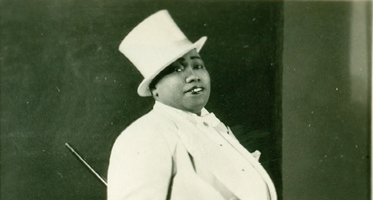
#Gladys bentley full#
This is when Gladys began performing in men's attire ("white full dress shirts, stiff collars, small bow ties, oxfords, short Eton jackets, and hair cut straight back"), and here, she perfected her act and became very popular and successful. Later, she heard that the Hansberry Clam House on 133rd Street needed a male pianist. When Bentley first moved to New York from Philadelphia, she impressed a Broadway agent right away, recorded eight tracks, and received a $400 check. She recorded for the OKeh, Victor, Excelsior, and Flame labels. Fictional characters based on Bentley appeared in Carl Van Vechten's Parties, Clement Woods's Deep River, and Blair Niles's Strange Brother. On the decline of the Harlem speakeasies with the repeal of Prohibition, she relocated to southern California, where she was billed as "America's Greatest Sepia Piano Player", and the "Brown Bomber of Sophisticated Songs". She dressed in men's clothes (including a signature tuxedo and top hat), played piano, and sang her own raunchy lyrics to popular tunes of the day in a deep, growling voice while flirting outrageously with women in the audience. She headlined in the early 1930s at Harlem's Ubangi Club, where she was backed up by a chorus line of drag queens.

She moved to New York at the age of 16, and her career as a performer skyrocketed when she appeared at Harry Hansberry's Clam House on 133rd Street, one of New York City's most notorious gay speakeasies, in the 1920s, as a black, lesbian, cross-dressing performer. Bentley and his wife, a Trinidadian, Mary Mote. She was born in Philadelphia, the daughter of American George L. Gladys Bentley was a pianist, singer, and performer during the Harlem Renaissance.


 0 kommentar(er)
0 kommentar(er)
